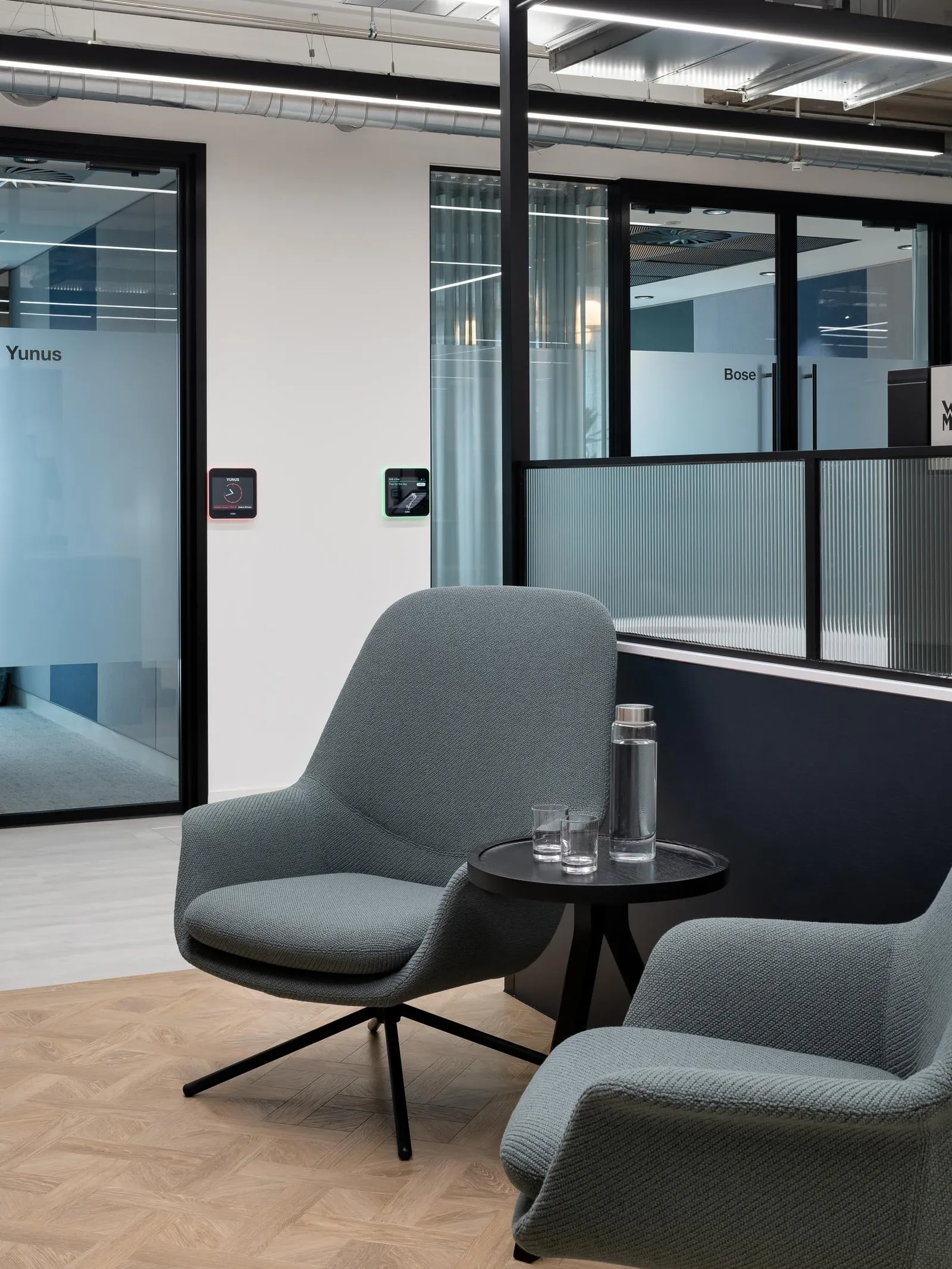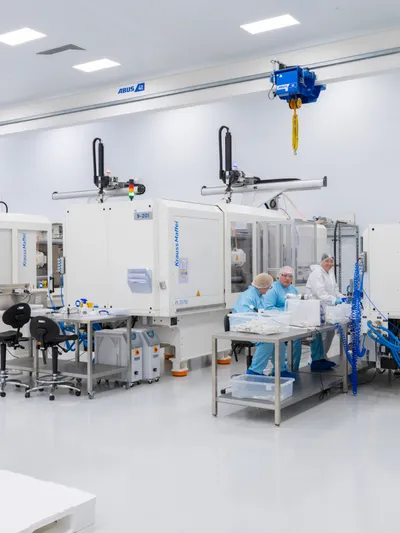There are roughly 230,000 people working in medical sciences in the UK across myriad disciplines, and every lab must accommodate the work of these professionals, recognising control measures whilst making way for innovation as they carve individual pathways in research, development, discovery, and exploration.
When we design a lab, we aim for more than just box-ticking to ensure the space is compliant. Truly efficient lab design means lifting the lid on internal operations to understand what makes the place tick. Then, thinking outside the box, not only to facilitate operations but to give way for creativity and long-term growth.
The Health Technical Memoranda (HTM) 67 provides comprehensive guidance on commissioning laboratory design, planning, specification, and engineering in the UK. This documentation unifies all the standards and regulations that lab design features must meet to be safe, sustainable, and efficient. Taking this into consideration, let’s look at some of the design features of a modern laboratory in more detail.

Understanding the Essentials of Laboratory Design
What are the bare essentials that all good laboratories need?
Biosafety and Other Risks
Toxic and corrosive chemicals, biohazards, machinery, heat, sharps, and numerous hazards present in labs make them high-risk environments. Risk assessments for laboratories will demand additional safety measures above that in standard workplaces. These could include any or all of the following.
Fume hoods
Defibrillators
Safety showers
Eyewash stations
First aid kits and signage
Bleed control first aid kits
Fire extinguishers and blankets
Emergency lighting and alarm systems
Hazardous waste disposal points (including sharps bins)
The Control of Substances Hazardous to Health (COSHH) Regulations are the primary biosafety legislation in the UK and dictate the measures laboratories must take to control, minimise, and prevent exposure to hazardous chemicals. Some of these measures include “providing control measures to reduce harm to health; making sure they are used; keeping all control measures in good working order; providing information; and planning for emergencies”.
To incorporate safety measures into good lab design, we think about how to make them easy to see, locate, and access at a moment’s notice. For example, if someone suffers cardiac arrest, defibrillation must occur in less than ten minutes to give the causality any chance of survival. So, a defibrillator must be positioned close to areas with a heightened risk of cardiac arrest, such as electrical stations.
But safety equipment must also be installed away from potential damage and avoid endangering those using the lab (such as trip hazards). We need to strike a fine balance between accessibility and convenience whilst always prioritising safety in the lab.
Accessibility
A close second to safety in the order of priority is accessibility, so everyone can use the lab whenever needed. What encompasses accessibility in design? We start by considering all the different individuals who need to use the space and any challenges they might face. This includes:
Physical disabilities
Learning disabilities
Sensory impairments
Children and young people
Busy periods
Approaching accessibility in laboratory design means starting with the basics: layout and space. Transient spaces should be wide enough for wheelchairs, and spacious enough for several people to pass one another without becoming over-crowded and causing hazards. We also carefully consider how different areas of the lab interact with one another. Our aim is to create a floor plan that eliminates unnecessary travelling as much as possible to make the experience easier and less stressful for those using the space.
Other accessibility considerations:
Feature | Details |
Equipment and storage | Are control panels and buttons at a height that everyone can use easily? Can drawers and cupboards be opened easily, even when seated in a wheelchair? |
Furniture | Where possible, it’s a good idea to use height-adjustable workstations. Modular workstations offer added flexibility to work layouts—ideal for classroom labs that need to respond to varied ways of working. |
Signage | This should be clear and easy to read. First aid signs should be in green and white, warning safety signs in yellow, prohibition and fire safety signs in red, and mandatory safety signs in blue. |
Lighting and noise control | Good quality lighting is essential to ensure visibility when carrying out sensitive activities. Consider how bright light and noise levels. |
Storage
Effective laboratory storage design should allow work to continue efficiently and conveniently. Storage should maintain lab supplies in safe environments where they keep good quality and don’t pose a risk. See the table below for a comprehensive list of considerations when looking at lab storage.
Consideration | Reason |
Safety regulations | Ventilation, temperature control, segregation of certain chemicals, fire safety, and water resistance. Safety should be the priority in any storage design for a lab. Understanding the hazards associated with what the storage is used for and what will be adjacent is paramount. |
Hygiene | Robust hygiene solutions in storage will prevent cross-contamination, infection, leaks, spills, decomposition, damage, chemical reactions, and dust accumulation. This is essential to the safety of staff working in the lab, the validity of work carried out in the space, and the longevity of the lab itself. |
Accessibility | Intelligent storage design should make work easy for those using the lab. This means storage space should be easy to access, see, and look into. Hazardous chemicals and items should not be placed high where they could spill or be difficult to reach safely. Inventory management is vital so that samples and chemicals are labelled, used, and tracked correctly. |
Scalability | A good laboratory is future-proof, and that means designing for growth. It’s essential that lab storage can accommodate periods of busier stock without compromising safety and performance. |
Some options for lab storage are:
Open storage solutions such as free-standing or worktop shelving allow staff to see everything easily and from multiple angles.
Mobile cabinets that can be used to create modular work spaces and transport items easily.
Tall cupboards and vertical storage which offers maximum storage capacity and flexibility in adjustable shelf heights.
Acoustics
Considering the materials found in lab equipment (glass, metal, wood) and machinery (centrifuges, vacuum pumps, exhaust vents), labs can be noisy places. Good lab designers aim to reduce the impact of loud activities to a minimum to create an environment conducive to focus.
As a general rule, we opt for materials that will absorb noise where possible. Careful selection of materials used to create a laboratory's surfaces, walls, and floors significantly impacts noise production. Soft-close drawers, cupboards, and even doors ensure work can continue effortlessly without banging and crashing.
Soundproofing between areas and intelligently designing loud environments to be sectioned off and grouped with other loud environments also helps to build a lab that allows everyone to work efficiently.

Incorporating Efficiency into Your Lab Design
Looking at efficiency a little deeper, what other design factors contribute to an efficient workspace? It’s really a compromise between several key factors in the overall project. Balancing health and safety considerations with ergonomics, aesthetics, and functionality must be done carefully to ensure all relative compliance is met. At the same time, the space must still function at optimal performance for its intended use.
Safety is, of course, the priority in any lab design project. Higher-risk lab environments demand strict protocols and controls to uphold health and safety laws. If a lab isn’t meeting health and safety requirements, it simply isn’t efficient. Intuitive storage of PPE, warnings and first aid signage, and defibrillator and extinguisher placement are some of the essential starting points for efficient lab design.
Combining fixed and modular elements in the space should also be optimised with a view to efficient workflows and processes. This is especially true for smaller labs where space is even more precious. Vertical storage, wall-mounted equipment and shelving, and ceiling and wall-mounted devices free up valuable floor space, whereas modular and moveable furniture provides limitless possibilities for rearranging the space as needed.
It’s easy for designers to run with ideas for the space available, but it’s important to remember to listen to the client and properly investigate the organisation before taking any steps towards planning a lab design. Getting under the skin of the business to understand its inner workings is vital if you plan to produce a successful end result. Observing day-to-day operations, current challenges and stumbling blocks, and overall aspirations and goals can provide a clear roadmap of exactly what is needed to make the space truly efficient for the unique workings of the business, the team, and the space itself.

Key Considerations for Future-Ready Laboratory Designs
Laboratories of the future will be driven by flexibility, adaptiveness, technological integration, and sustainable design principles.
Adaptability and versatility will be necessary to meet the increasing demands of changing work dynamics, evolving research needs, and technological developments. Still, these must be balanced with sustainable building practices that steer future design approaches. Integral to future-proof lab design will consider waste reduction, such as greywater use and optimising natural light, renewable energy sources, and recovered or reclaimed materials. While modular, movable, and stackable equipment and furniture facilitate the ever-changing needs of the lab or the future.
Collaborative spaces and ergonomic considerations must drive innovation and productivity in the lab. That means making it accessible for individuals with wide-ranging needs as well as ways of working. With the rise of hybrid and remote working, an effective lab design will incorporate technology that enables productivity across teams no matter where they are.
Speaking of hybrid working, a digital-first approach to design is paramount to pave the way for technology integration. Artificial intelligence, AR, VR, robotics, automation, and cloud-based technology will become increasingly prevalent in day-to-day lab activities. A good lab design should incorporate these and other elements in a scalable way that provides room for growth and expansion.
If scalability is a primary element from the beginning of the project, the result will be a flexible, responsive, robust space that can anticipate change. This means there’s no need for costly, resource-demanding, inefficient restructuring, and the lab can support essential activities for years to come. If this sounds like the kind of lab you need, talk to us. We’re Area: lab design specialists who create spaces that support your objectives in the long term.




